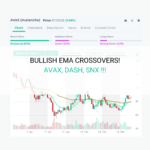Trading moving averages - part 1 (using EMA 12 / 50 crossovers)
In the next few weeks, we’ll demonstrate several simple but powerful trading strategies that utilize moving averages and can be implemented on altFINS platform.
Among these strategies are:
- EMA crossovers (12/50 day)
- EMA crossover (5/26/50 day)
- Price / EMA crossover (50 day)
- EMA ribbons
- SMA crossover (100/200 day) and Stochastic indicator
These are trend following strategies, not swing trading strategies.
Let’s begin with a simple trading strategy using moving average crossovers.
Moving Averages (MA) help identify 1) price trends and 2) potential support and resistance levels.
You can read about differences between SMA and EMA in our knowledge base, but in short, EMA puts greater weight on the most recent prices, and thus has less lag than SMAs. Hence, EMA reacts quicker to price changes.
This strategy uses the 12 day and 50 day Exponential moving average (EMA).
Trading rules:
- Buy when EMA 12 crosses above EMA 50. Sell when EMA 12 crosses below EMA 50.
- Place a Stop Loss order (or Alert) below the prior low.
- Trade with overall long-term trend
You can set up a custom screen in altFINS to catch these opportunities by using these criteria:
- EMA 12 is above 100% of EMA 50 (i.e. cross above)
- EMA 12 is below 105% of EMA 50 (it’s a recent crossover and distance between the EMAs is small – 5% of less)
- Last Price is above 100% of EMA 12 (this ensures that EMA slope is still up)
- Volume ($) is above 100,000 (some min liquidity)
Below is a tutorial video on how to create this custom screen.
The great part about this approach is that it gives clear trade entry and exit signals. Often, timing trade exit (at a loss or profit) is the toughest part. Here’s it’s clear: when EMA 12 crosses below EMA 50, or hits our Stop Loss level.
Let’s look at some past examples:
(note that our performance calculations use closing price one day after crossover day, to be conservative)

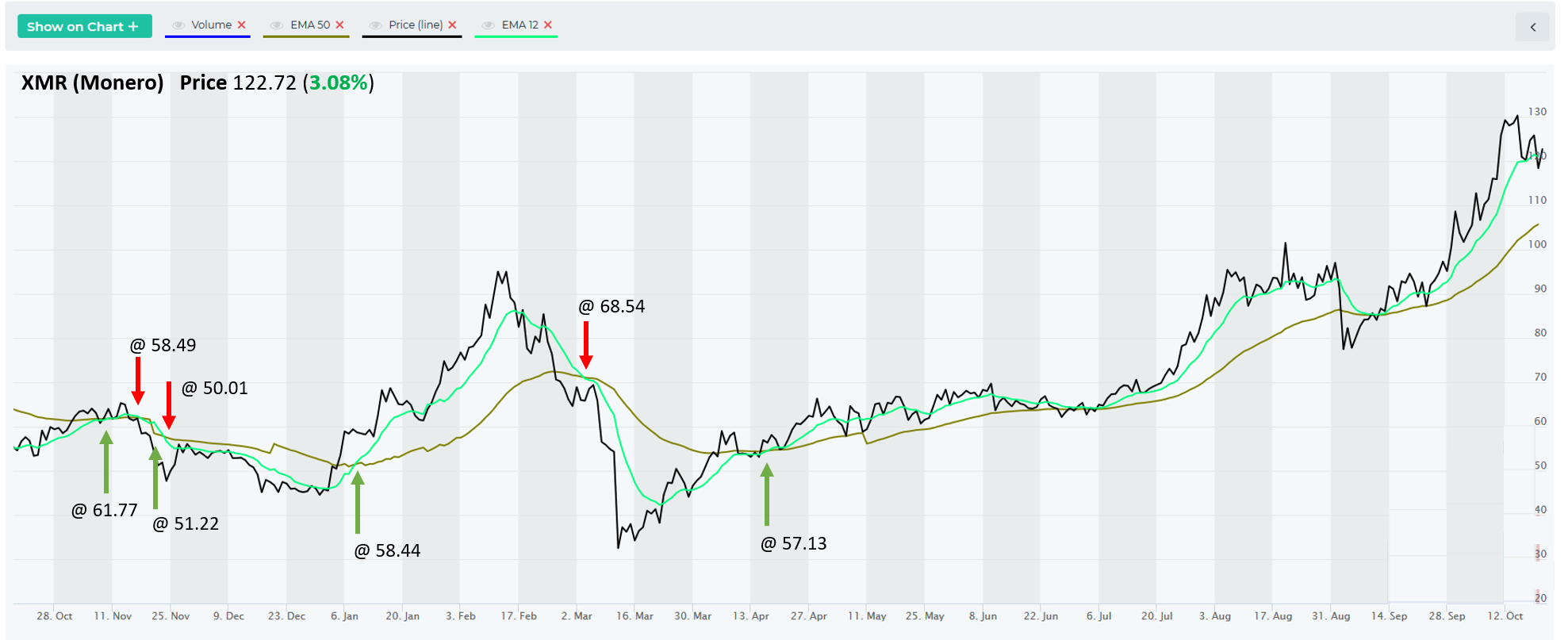

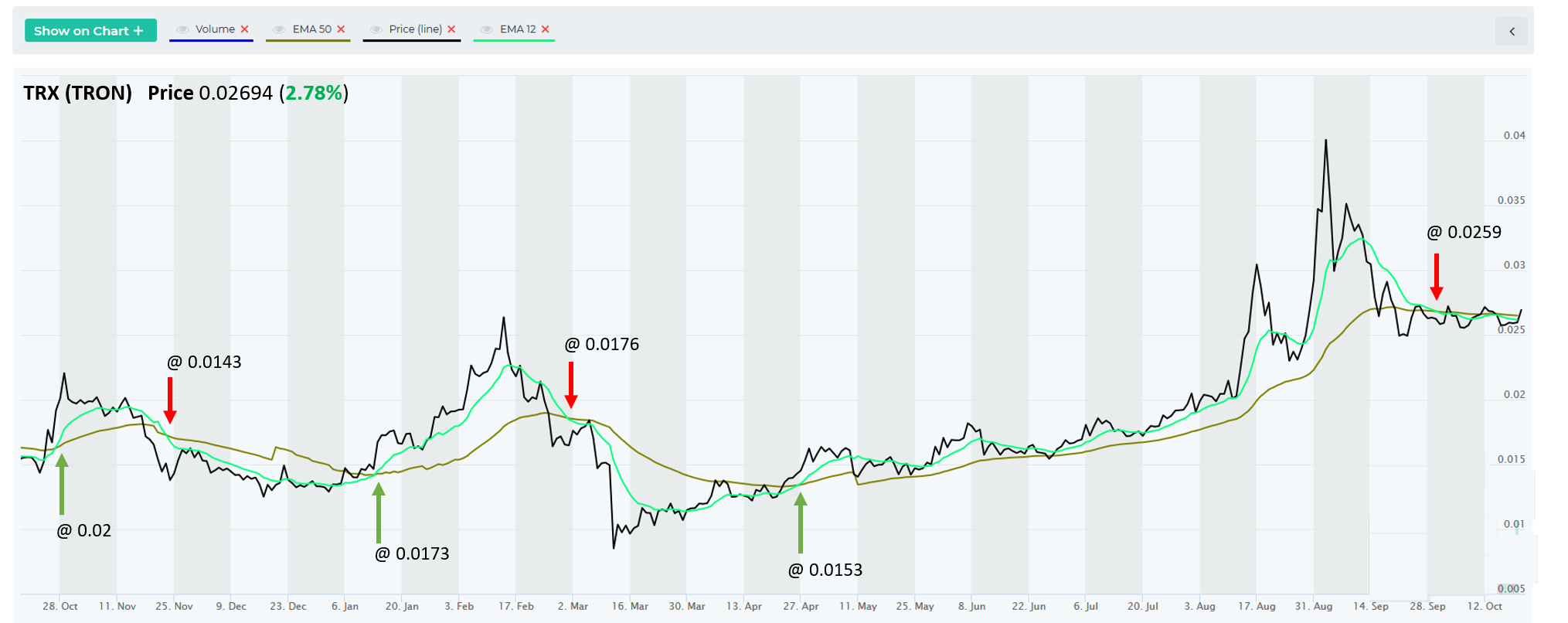

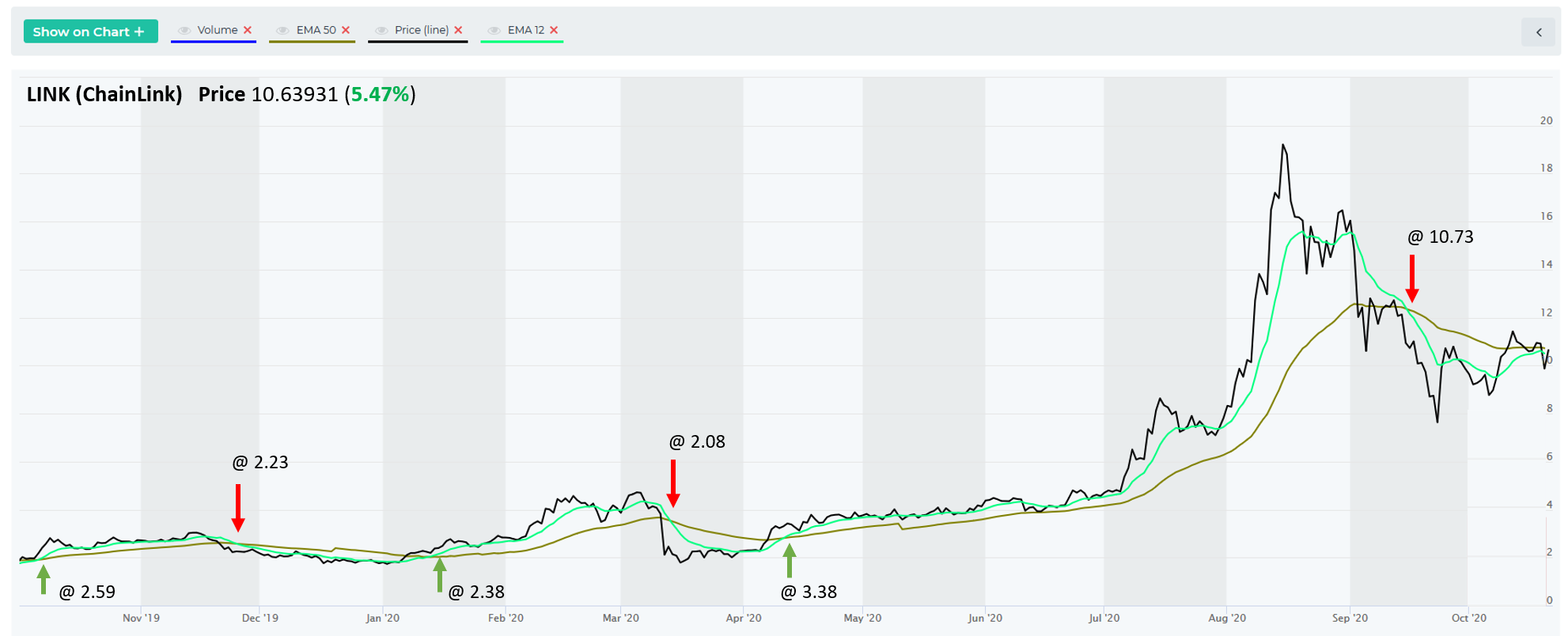
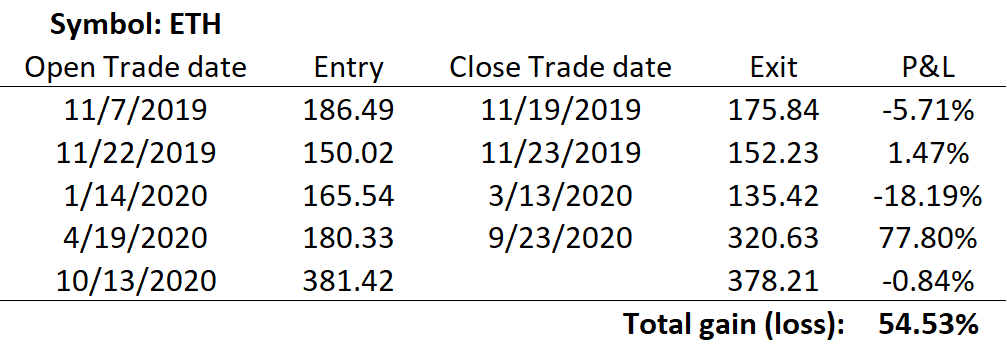
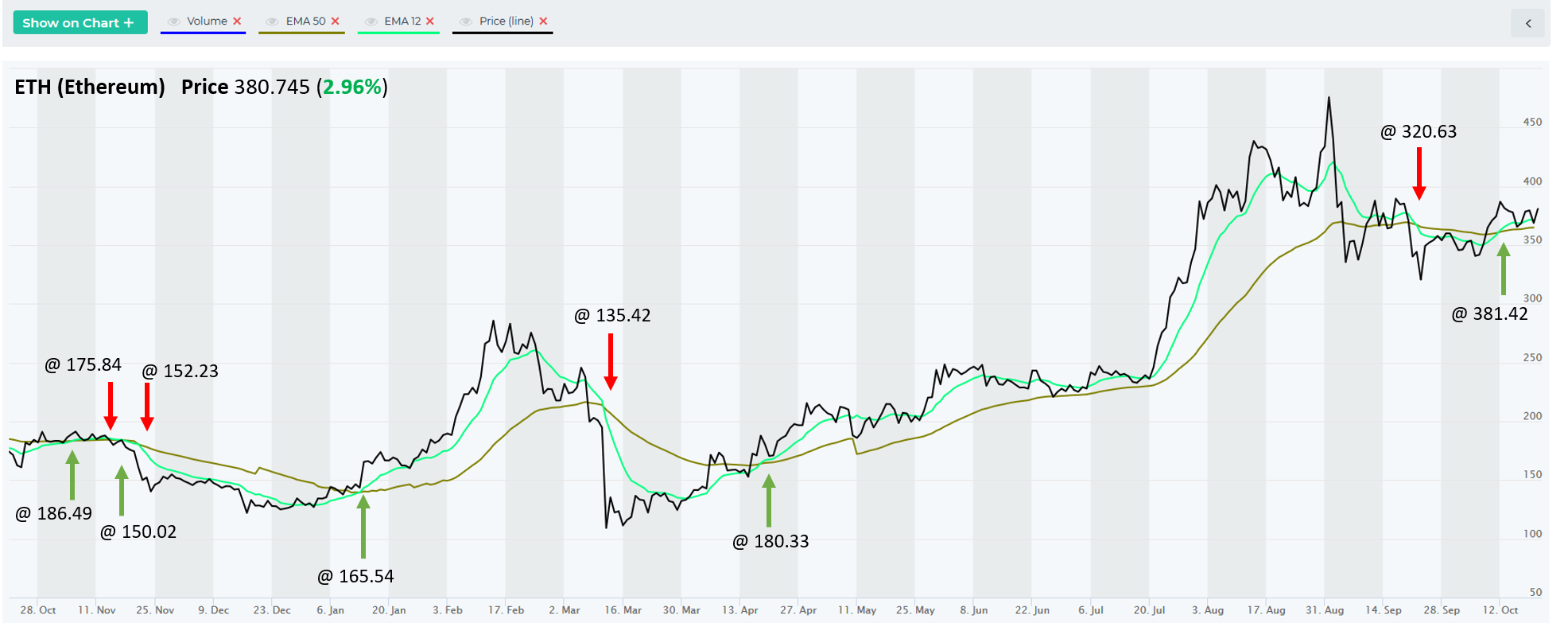
This strategy, like many others using indicators, has a weakness – it may lead to whipsawing. That is, it may signal Buy only to signal Sell soon afterwards. This happens in times of sideways consolidation. EMA crossovers work best in trending markets.
If you’re in an overall sideways market, you may want to drop down to a timeframe or two to do shorter term EMA crossovers (4h or 1h).
BCH is an example of where this strategy would get whipsawed in a sideways trading range, without catching a substantial uptrend.

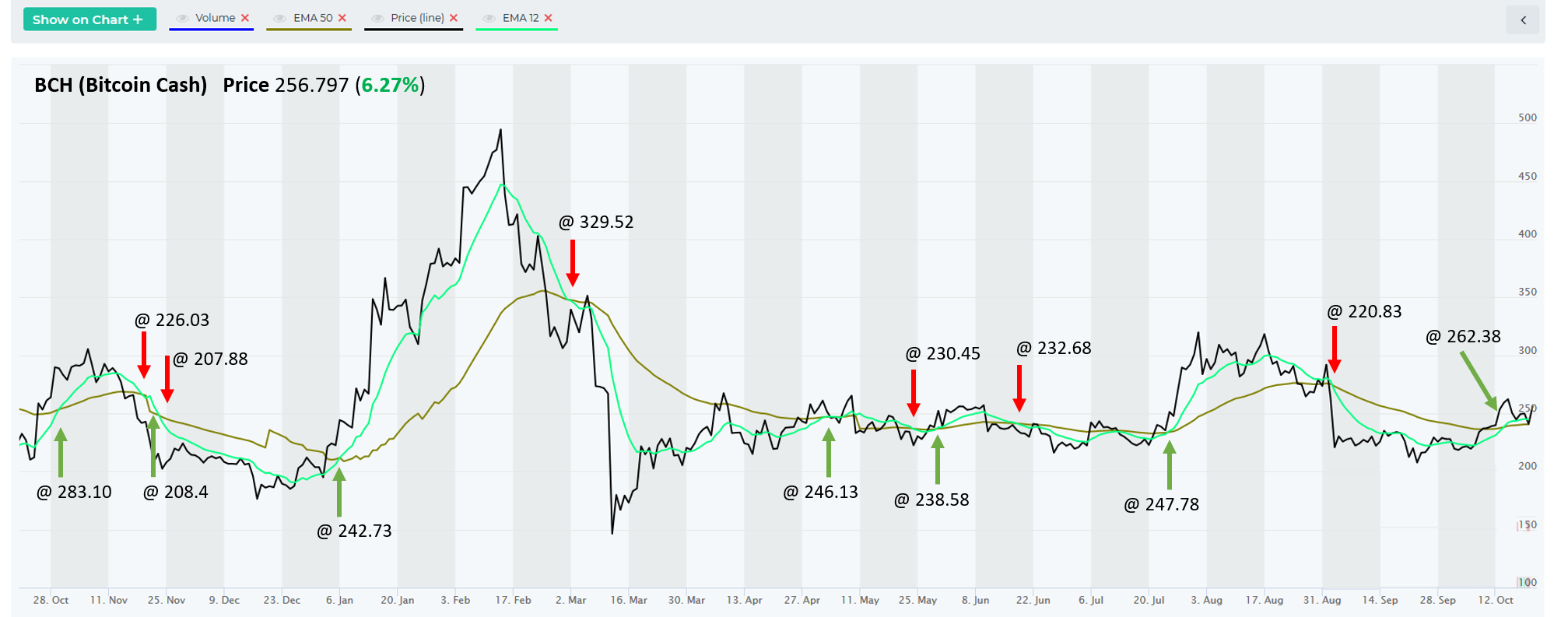
EMA crossovers work on any timeframe, you can use lower time frames for shorter trades and higher timeframes for longer. Lower timeframe is more subject to noise and false signals, so it’s not recommended under 1h.
Ideally, only take LTF (lower time frame) trades in the direction of the HTF (higher time frame)
Also, the long term positioning of EMAs helps avoiding whipsaw trades (whether 14/50 EMA are above or below the 200 EMA on the daily chart). 200 day EMA is a good indicator of a long term trend.
For newbies, you can put the odds in your favor by only taking buys in an uptrend (aka “Buy the dips”) or sells in a long term downtrend (aka “Sell the pullbacks”).
Risk management – Stop Loss and trade size. In all of these setups, traders should use Stop Loss orders to manage their downside risk, in case the trade goes against us, as it often will. Trading is about probabilities and even though these setups have a high win rate, one must be prepared to minimize losses on the trades that go bust. If Stop Loss order types are not supported by they exchange, at least set up a price alert (see video). Also, trade size should be such that you never risk losing more than 2% of your total equity. Keeping the trade size small allows the trader to setup a wider Stop Loss, which gives the trade more room and time to complete with success. Setting Stop Loss levels too tight can often result in getting knocked out of a trade prematurely.
Disclaimer: This content is for informational purposes only, you should not construe any such information or other material as investment, financial, or other advice. There are risks associated with investing in cryptocurrencies. Loss of principal is possible.

